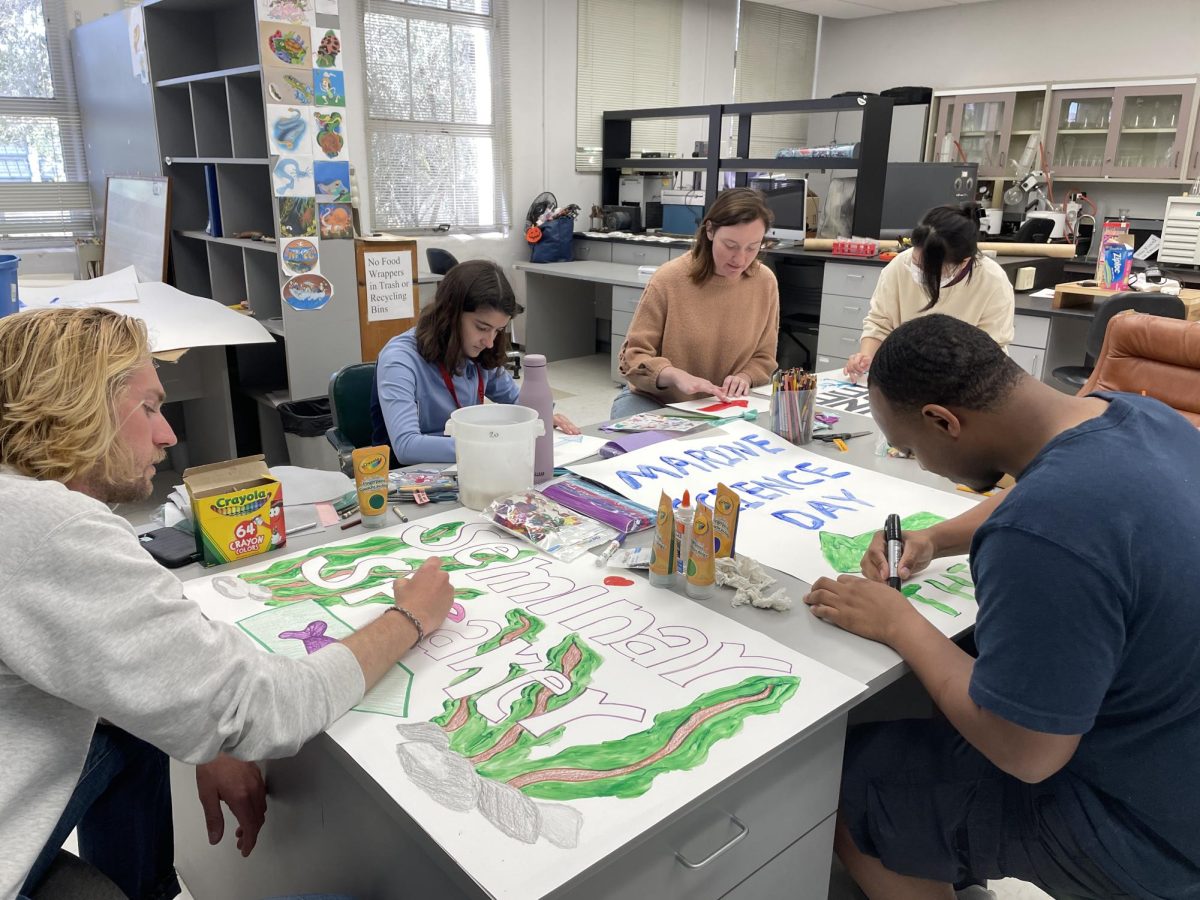The Sources of Wonder: Homer and Betty Peabody Magic Lantern Collection made its debut on Valentine’s Day at San Diego State’s Love Library. Consisting of 42 lanterns and 5,000 slides, the collection dates back from the 19th century until the early 20th century.
The Peabodys collected magic lanterns from 1971 to 2005 when Mr. Peabody passed away. This hobby began when Mrs. Peabody found a toy magic lantern and six slides inside of her husband’s closet and accidentally broke a slide.
Feeling guilty, she started scavenging antique shops to find replacements for the magic lantern slide she broke. From then on, they traveled the world as their collection grew.
“It was the only type of shopping he enjoyed, and whenever he spent too much on a lantern, he would buy me a cookbook,” Mrs. Peabody said.
According to Robert Ray, head of special collections and university archives at SDSU, Christiaan Huygens, a Dutch scientist, created the first magic lantern in 1658. Early illuminants used were the sun, candles and oil lamps. The lantern gathers light and projects it through a slide onto a screen.
Magic lanterns were first used in religious institutions and for educational purposes. Traveling lanternists would perform for only the wealthy. Shortly after, showmen would perform for the public using light to entertain, deceive and trick the audience. However, during the mid-20th century, the projector was invented and the lanterns lost their fame.
To expose people to this lost art, The American Magic-Lantern Theater performed at SDSU last Tuesday. Terry Borton, the producer and performer of the show, captivated the audience with narratives of love.
James E. Potter Junior High School students visiting campus that day sat fascinated in the audience. They chimed in with “hip-hip hoorays” and sang along to the lyrics on screen.
Borton’s performance with Nancy Stewart’s singing was charismatic and inviting; even the two-year-old sitting in the front row clapped and laughed along.
What Borton enjoys most about performing with the magic lanterns is entertaining the audience.
“They love the beautiful pictures, they love the beautiful music, they love my dramatic voice,” Borton said.
After the show, a junior high student asked if magic lanterns were invented before “Avatar.”
Mrs. Peabody found this remark amusing, but knew that her and her husband’s collection found the right home. According to Mrs. Peabody, above all, her husband wanted their collection to educate the public.
Clearing out the collection from the Peabodys’ home took two men, three days and 21 hours.
The Sources of Wonder exhibit illuminates SDSU’s Love Library donor hall until June 29.






